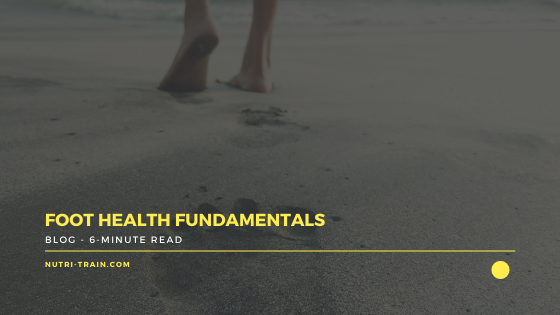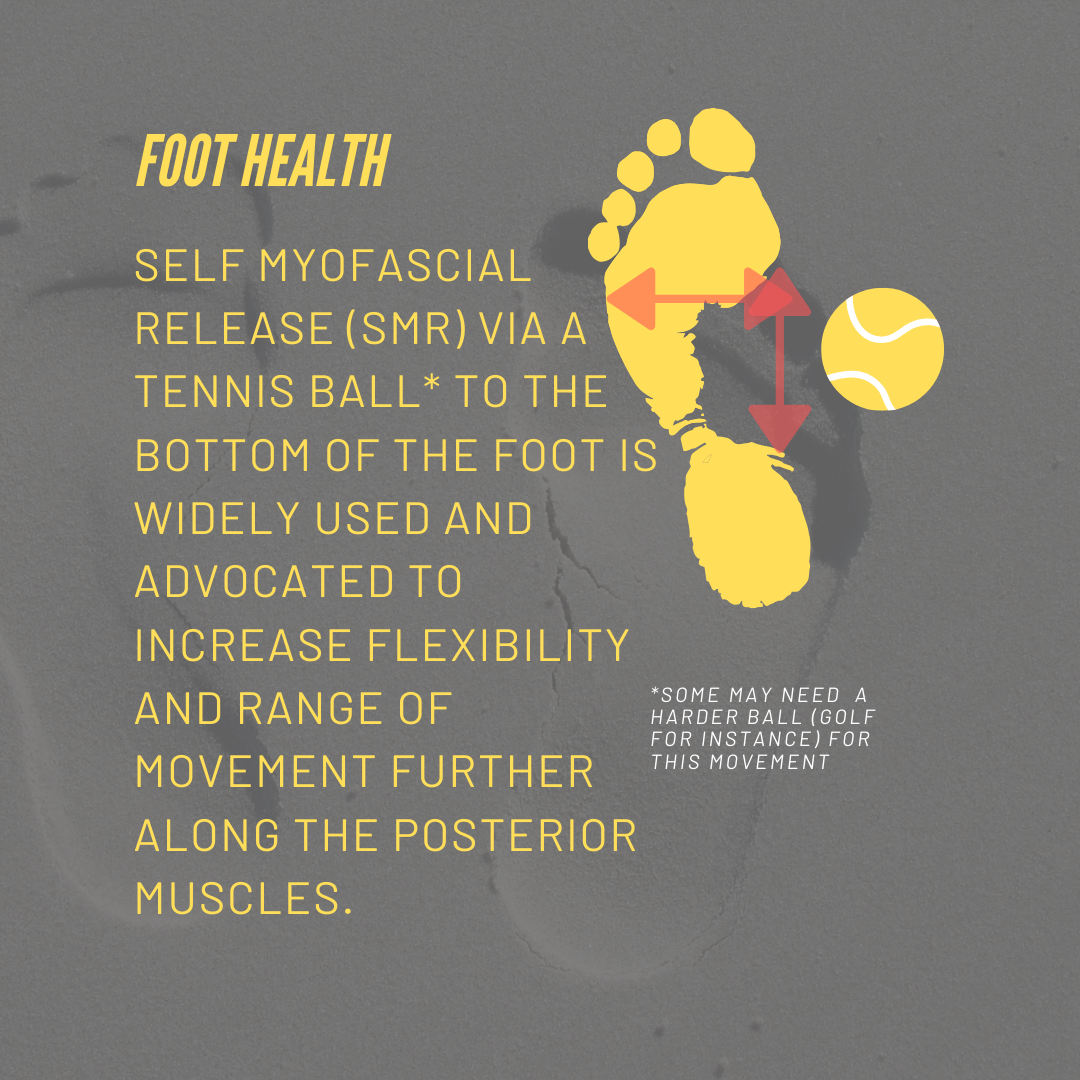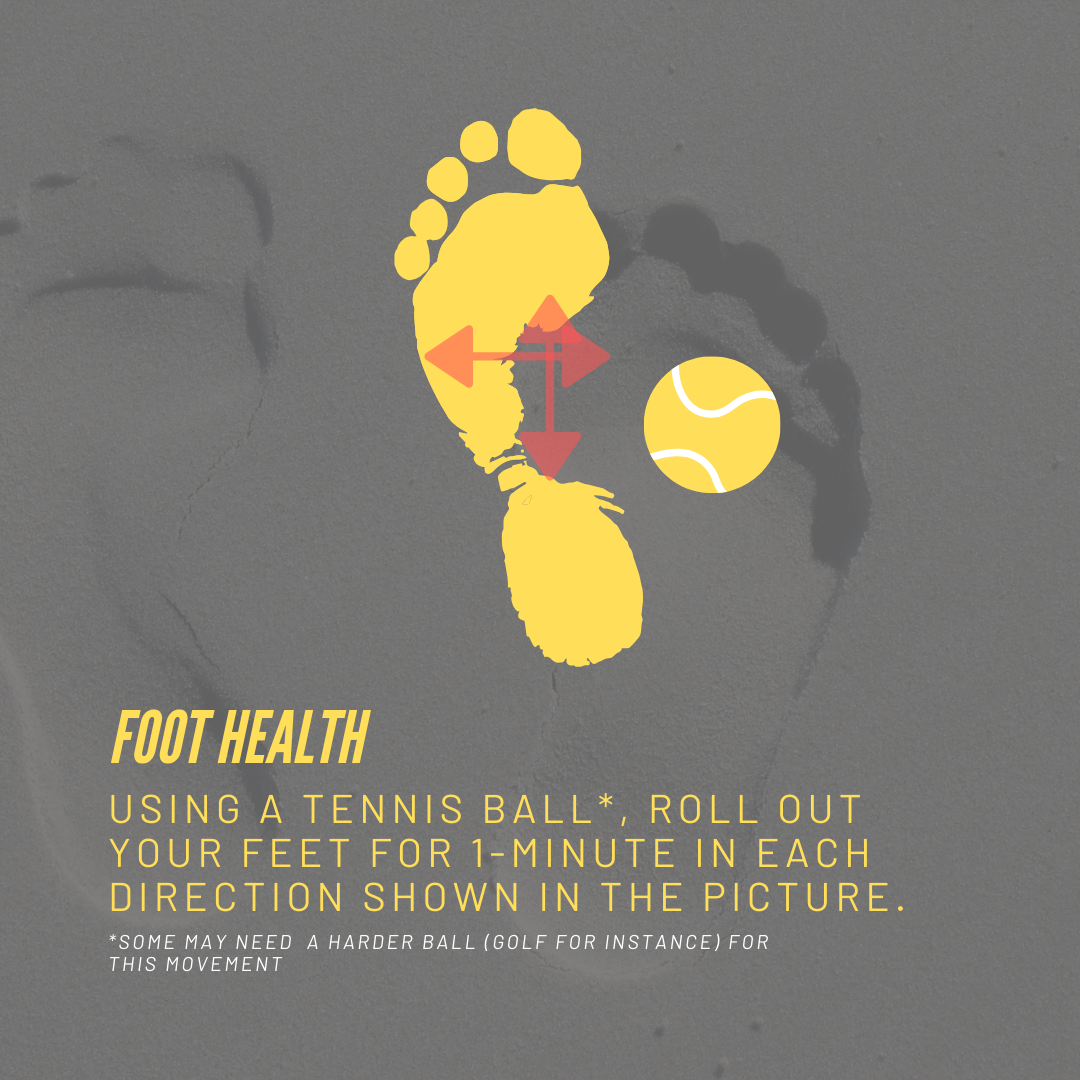|
If you’ve attended one of my movement workshops or follow me on social media, you’ll know how passionate I am about foot health and the barefoot lifestyle! I first learnt about the importance of maintaining good foot health back in 2011 when I was qualifying to become a Personal Trainer, but it wasn’t until 2016 that I came to fully appreciate the impact feet have on the rest of our bodies – especially our posture! I’d always notice how great my feet, legs and hips felt after a holiday where I could spend 90% of my time barefoot or in unrestrictive shoes. I soon found myself enjoying the freedom of training barefoot. But, it didn’t stop there. One of my client’s sciatica started to flare-up and I soon found that foot mobility drills, along with some calf, hamstring and glute work really helped alleviate the problems, which made me realise there were benefits beyond performance to improved foot health. My passion grew from there. Over the years I’ve adopted a more holistic approach to my coaching by focusing on my client’s sleeping, eating and other lifestyle habits. All in the hope of not only helping them become happier, healthier people today, but ensuring their longevity, too. Ageing can be a scary thing, especially when you consider age-related issues like the increased risk of falling, loss of muscle, and bone density, etc. But, what if we could minimise the risk of these age-related issues through the actions we take today? That is the focus of this blog. For instance, falling is one of the most common injury problems with the elderly[i], many of which could be avoided if their ‘base’ was stronger.[ii] Falling can be much more serious when you’re older – since bones are more brittle, they break more easily, and a broken hip can quickly result in hospitalisation and pneumonia, starting a scary downwards spiral. Further, once an older person has fallen once, it increases their likelihood of a second fall and can seriously impact their confidence in everyday activities like walking to the park or looking after the grandchildren. Maintaining good foot health, which is vital for gait and balance, increases your ability to be more active and exercise as you age, which promotes healthier ageing and reduces the risks of developing lifestyle-related health complications.[iii] My key message is: choose better shoes and look after your feet today, so that you can move more freely and confidently tomorrow, and support healthy ageing. I like to break down the fundamentals for improving your foot health into two principles: 1.Function – mobility and strength 2.Care – environment and footwear These two principles are complementary and need to be applied in combination, with an emphasis on addressing your biggest issues first. The function of our feet can be addressed in two ways; mobility and strength. Mobilising your feet (and ankles) is a great way to increase your ‘base’ since modern shoes tend to narrow and de-sensitise our feet. Plus, a stronger and more stable foot is needed if we’re to truly strengthen them. We can’t build a strong and stable house on faulty foundations, can we? Caring for your feet can also be addressed in two ways; the environment you expose them to and your footwear. Our feet have been altered by cushioned and narrow footwear and smooth surfaces. I advocate spending as much time barefoot as possible, to naturally increase mobility, strength and sensory feedback. Our feet have thousands of nerve endings that provide vital sensory feedback to the brain and the rest of the body, which is key for strong, confident movement. Not only that, it’s important to allow your feet the opportunity to return to their natural and primitive state – wide, strong and durable, which is why the correct footwear when you’re not able to be barefoot, is also crucial. In my opinion, most commercial shoes contribute heavily towards a loss of foot mobility and other biomechanical abnormalities. Below, I outline my ‘Nutri-Train™ foot fundamentals’ that everyone should practice: 1. Increase your time spent barefoot 2. Roll-out your feet daily with a tennis ball (see pic below) 3. Workout/train barefoot as often as possible so that you’re able to increase your foot strength as manage your balance and surroundings (please keep it hygienic and don’t drop anything on your feet!) 4. Begin decreasing the narrowness and stiffness of your footwear overtime until you’re in a minimal style shoe – I like VivoBareFoot. 5. Give your feet the time they need to adjust – just like losing weight, you can’t expect to undo years of wearing narrow wingtips, stilettos or ballet flats overnight. You’ll need to slowly transition to minimalist shoes. But, the more effort your put into improving your shoe choices and foot health, the better your entire body will feel. Just remember that when you’re trying to improve any aspect of your health, it gets easier over time. Stick at it!
Let me know what you think below! Speak soon, JC. [i] https://www.ncbi.nlm.nih.gov/pmc/articles/PMC3135440/ [ii] https://www.ncbi.nlm.nih.gov/pmc/articles/PMC6350454/ [iii] https://www.ncbi.nlm.nih.gov/pmc/articles/PMC5045036/
0 Comments
Leave a Reply. |
AuthorsJC and The Nutri-Team Archives
November 2020
Categories
All
|



 RSS Feed
RSS Feed
